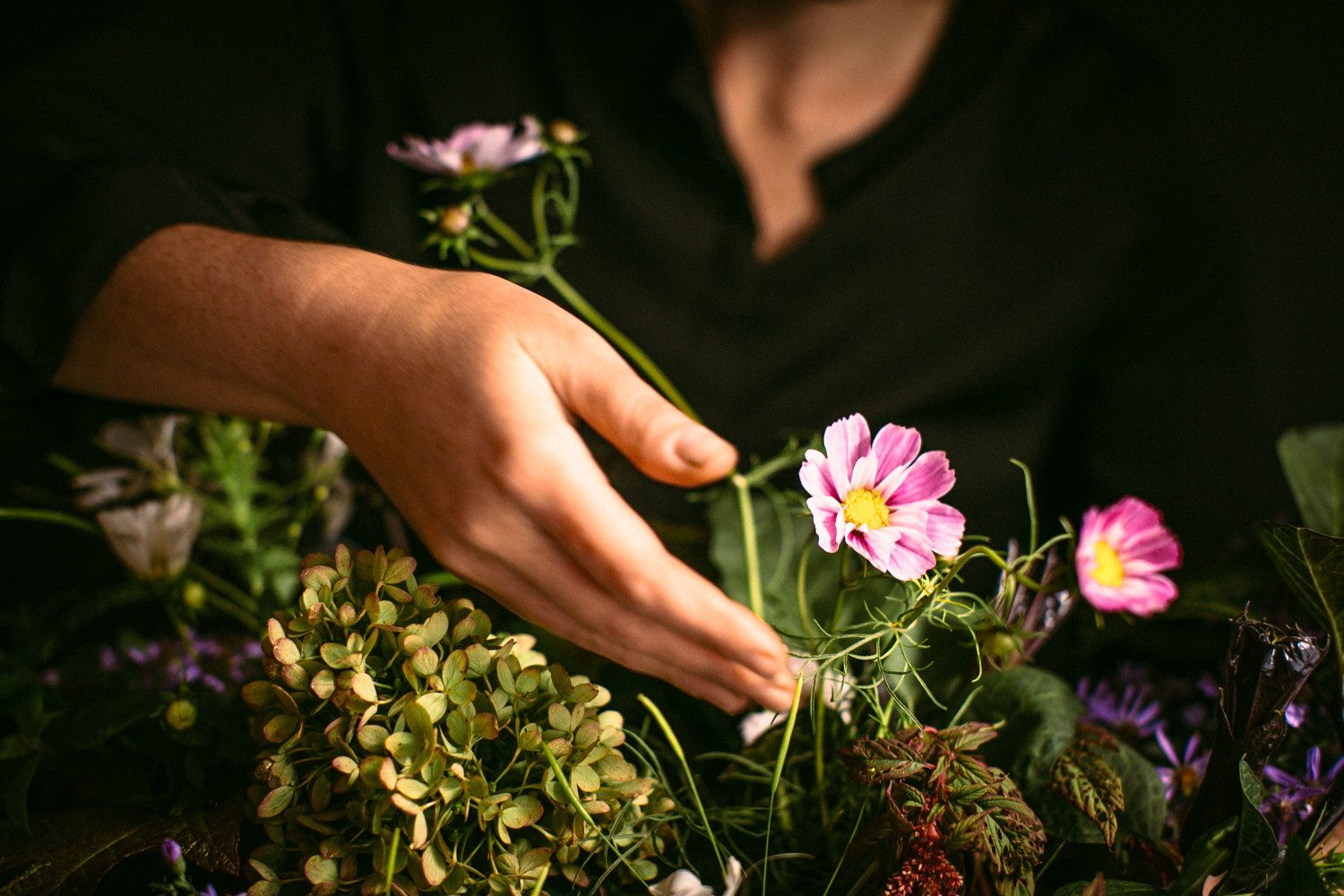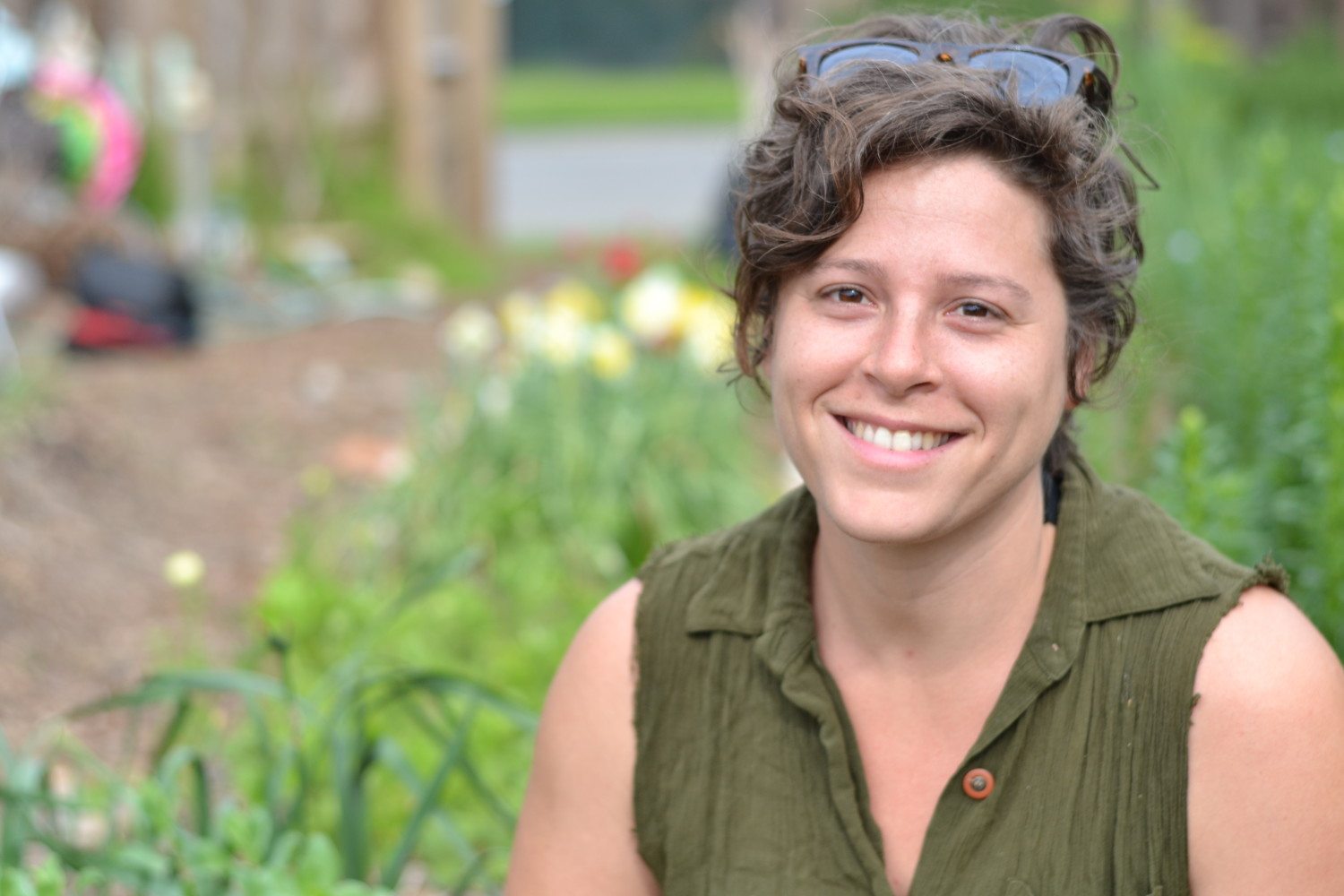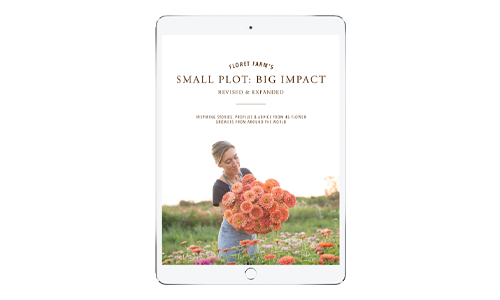In yesterday’s post on small space flower farming, I talked about the fact that you don’t need large tracts of land in order to have a flower farm or decent-sized cutting garden. If you missed my post about Sarah Nixon’s vibrant farmer-florist business that is spread across nine urban backyards in Toronto, then you’ll definitely want to hop over and catch up on her innovative business model. Today, I’m going to share a little bit about a couple other enterprising farmer-florist businesses who have each converted abandoned urban lots surrounded by a sea of blacktop and brick into beautiful, verdant oases overflowing with seasonal flowers.
First up is Erica Maust and Andrew Olson who own and operate Chicory Florals in Philadelphia. They currently grow on half an acre, split between two sites, one of which is a 1/4 acre vacant lot that until recently had rowhouses.

That meant that that they found a mix of brick and concrete rubble a few inches beneath the surface, requiring them to do a fair amount of work to amend the soil, such as haul in 30 yards of compost, in order for it to support intensive plantings of flowers. They have drip irrigation setup for the six 110-foot beds that they connect to their only water source: a nearby fire hydrant.

“One of the things we’ve enjoyed the most about growing in this particular space is that it’s in a pretty densely populated neighborhood, so we’ve met a lot of residents, and the local kids often come spend time with us after school in the afternoons or in the summer, so we’re able to talk with them about growing flowers and food,” Erica shared. “We didn’t fence the area or put up anything to protect the field, and have yet to deal with any vandalism on site. The community has really embraced the space, and that’s been one of the most rewarding aspects of growing in an urban environment.”
 Erica and Andrew utilize the flowers grown on their urban lot for their full service event design studio. Their designs are described as “wild and romantic, unconventional and unexpected” and because they are able to grow their own unique flowers and foliage for their designs, their designs include materials not found in designs by most traditional brick-and-mortar florist shops.
Erica and Andrew utilize the flowers grown on their urban lot for their full service event design studio. Their designs are described as “wild and romantic, unconventional and unexpected” and because they are able to grow their own unique flowers and foliage for their designs, their designs include materials not found in designs by most traditional brick-and-mortar florist shops.

Utilizing a similar approach in New Orleans is Pistil and Stamen, an urban flower farm and design studio that grows flowers on approximately 1/4 of an acre which is spread across three different lots, each with different lease/rental agreements, in two different neighborhoods in New Orleans.


Co-owned and operated by Denise Richter and Megan McHugh. Richter moved to NOLA to help in post-Katrina relief efforts, specifically the Edible Schoolyard program.
 One of Pistil and Stamen’s lots is part of a new market that will feature all local produce and products. Outside the market’s new building are 2,000 sq ft of raised beds that they that we are designing and building out as an 100% edible cutting garden. The pair is busy planning their plantings of roses, black berries, kumquat and olive trees, as well as numerous perennial and annual herbs and medicinals, along with more traditional edible flowers.
One of Pistil and Stamen’s lots is part of a new market that will feature all local produce and products. Outside the market’s new building are 2,000 sq ft of raised beds that they that we are designing and building out as an 100% edible cutting garden. The pair is busy planning their plantings of roses, black berries, kumquat and olive trees, as well as numerous perennial and annual herbs and medicinals, along with more traditional edible flowers.
A second plot houses the pair’s studio and cutting garden. Pistil and Stamen rents the land from a young couple who are leasing the rest of the property. They all share the lot which features a super cute silver trailer studio, cooler, and 3,000 sq ft cutting garden where they planted fall bulbs, snaps, and other cool season flowers last fall.

Across town, another urban flower farm has also–literally–put down roots. Megan Webbekin left her government job to pursue her dream of farming and founded NOLA Tilth on approximately one acre of rented land in New Orleans East. Fishing once sustained this community but the dual disasters of Hurricane Katrina–which destroyed most of their fishing boats–and then by the BP oil spill–that ruined their primary fishing grounds–left the community reeling. Flowers and herbs from NOLA Tilth are now a small part of the ongoing recovery efforts of this area.


Rising interest in urban flower farming led to the creation of the New Orleans Flower Growers Association–a small group of urban flower farmers including Webbeking, McHugh, Richter and others who grow seasonal flowers in the Crescent City. The group shares seed and plant orders, helps to supply one another with flowers for big events and otherwise supports one another in their urban flower farming ventures.
Their group sounds so fun, doesn’t it? Their association illustrates what a warm, giving, supportive and vibrant community exists as part of the Seasonal Flower Movement.
Looking for more urban flower farm inspiration? Here are a few other examples from across the country.
Detroit: Fresh Cut Detroit
Baltimore: Butterbee Farm
L.A.: Silver Lake Farms NOTE: Tara Kolla, founder of Silver Lake Farms was also featured in the “Flower Power” article on farmer-florists and the Seasonal Flower Movement in the most recent issue of Rodale’s Organic Life magazine (formerly Organic Gardening)–be sure to pick up a copy if you haven’t already!
Philadelphia: Love n’ Fresh Flowers
Pittsburg: Green Sinner
Portland: Sunblossom Farm
St. Louis: Urban Buds
If you live in these areas, be sure to check out these urban farms and support the seasonal flower movement!
These are just a few examples and there are likely many more urban micro-farms literally sprouting up across the country. If you know of additional examples, be sure to share them in the comments below.







Licia Ruiz on
How subscription client works? What I need to do to get involve?